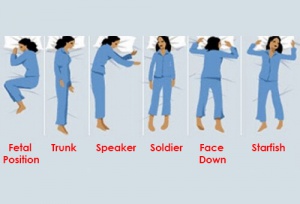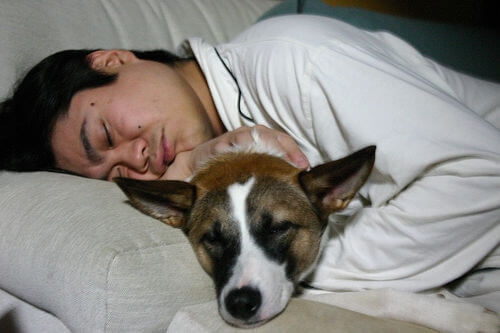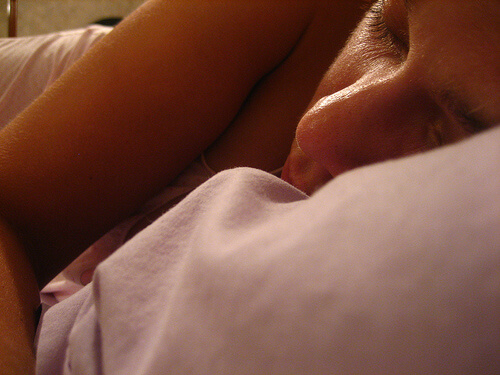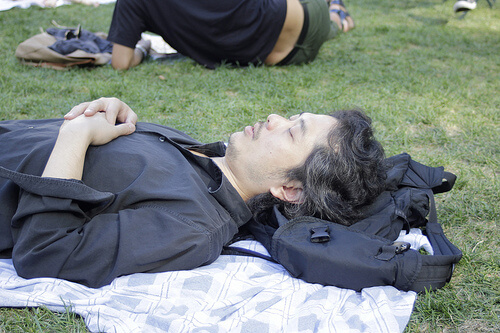What Our Sleeping Positions Say About Us


Reviewed and approved by the doctor Nelton Abdon Ramos Rojas
The way you sleep can say a lot about your personality, your habits, and even your concerns. There are many different sleeping positions. Discover what each one means in the following article.
Sleeping positions: what do they say about us?
You can deduce a lot about a person’s personality by analyzing their sleep positions. When you sleep, your body takes advantage of the rest, but your mind repairs and refreshes itself too.
Although it’s true that there are as many sleeping positions as there are people in the world (well, maybe not quite as many!), there are 6 main ones that we can consider today, along with a few variants in each specific case.
After a lot of research, scientists have revealed the relationship between sleeping positions and people’s personality. Body language says a lot about us, even while we’re asleep. Each of our sleeping positions has an impact on our health too.
The 6 sleeping positions
Fetal position
This is when we sleep on our side, curled, with our knees towards our chest, and our arms crossed or close to our legs. It has this name because it’s the position that babies have in the mother’s womb. Sometimes we can have our arm underneath a pillow too. It is the most common posture that people take when going to sleep.
In the aforementioned study, 41% of the 1000 people said they chose it. Double the amount of women chose it compared to the men. In regards to personality, there are different variations. For example, “curling up” to sleep shows sensitivity and emotions, as well as the tendency to have more intense relationships.
They can seem shy when they meet someone but afterwards they will relax. They are nice, caring people, and are scared of being hurt emotionally.
See also: Eight Aromatic Oils to Help You Sleep Better
“Trunk” position
In this position we sleep on our side, with both legs stretched out straight and our back straight. Our hands will tend to be on the side of our body or with one of them underneath the pillow or even stretched out. 15% of the people adopt this position.
People that do this are uninhibited, relaxed, and have a worry-free personality. They are very social people, get along with most people, feel good when they are part of a group, trust in others, but tend to be very innocent.

“Melancholy” Position
In this position your back is straight but your legs are slight bent forward. Your hands are stretched out in front, and one may be underneath the pillow. 13% of the volunteers in the study said they sleep like this. People that sleep in the melancholy posture have a more complicated personality.
Although they are friendly and open by nature, they also tend to be cynical and suspicious of others at the same time. Decisions are made calmly but when they make a decision, they are very stubborn and there is nothing that can make them change their mind. They can be best friends and care for others.
Soldier Position
In this position, the person sleeps face-up, with their legs separated at the hip. Their arms are stretched along the sides of their body (almost always touching it). No more than 8% said they sleep this way, with their chin towards the ceiling.
These people are usually reserved and quiet. They don’t have very strong emotions, and don’t let others know a lot about them. They don’t like the “ordinary” and have very high goals and objectives. Generally, they are loyal, protect their family and loved ones, and deeply value the ties they have with others.
See also: Colors Influence Your Emotions and Decisions: Learn How Here!
“Free Falling” Position
People have given the position this name because it seems like you just fell from heaven. The person will lie face down, with their head turned towards one side. They’ll have one or both hands underneath the pillow or above their head. 7% of the people studied said they slept like this.
In regards to personality, the “free-fallers” are very intense, sociable, uninhibited, and, deep down, very sensitive, people. They love freedom a lot and don’t like to be told what to do about anything. They are generally not judgmental people.
“Star” Position
This is the complete opposite of the one above, because the person is face up, with their arms partially or completely around the pillow, legs semi-bent or straight. This is the favorite position of 5% of the people interviewed.
The personality of the “stars” is that they are better listeners than most, very good friends, and are always willing to help others. But, most of the time, they prefer to be the center of attention whether its at a meeting, among siblings, etc.
In conclusion
Side positions (fetal, trunk, and melancholy) are the healthiest of the six. According to doctors, you need to sleep on your side in order to prevent putting pressure on your heart and the rest of your vital organs. We suggest turning onto your right side.
Some books also recommend changing your position halfway through the night.
The two face-up positions (star and soldier) can cause you not to sleep too well at night. This can cause snoring and other respiratory problems like apnea. It can also cause acid reflux.
Read more: How to Combat Sleep Apnea with 5 Natural Remedies
Lastly, the only face “down” position (free falling) is good for digestion, although others say that it is the least recommended because all vital organs are “pressed down” against the mattress.
Images courtesy of Tony Alter, David Goehring, Betssssy, Joi Ito, Timothy Krause
All cited sources were thoroughly reviewed by our team to ensure their quality, reliability, currency, and validity. The bibliography of this article was considered reliable and of academic or scientific accuracy.
- Agargun, M. Y., Boysan, M., & Hanoglu, L. (2004). Sleeping position, dream emotions, and subjective sleep quality. Sleep and Hypnosis, 6(1), 8–13; texto completo
- Beyers, J., Dieltjens, M., Kastoer, C., Opdebeeck, L., Boudewyns, A. N., De Volder, I. et al. (2018). Evaluation of a Trial Period With a Sleep Position Trainer in Patients With Positional Sleep Apnea. Journal of Clinical Sleep Medicine, 14(4), 575–583. https://doi.org/10.5664/jcsm.7048
- de Koninck, J., Lorrain, D., & Gagnon, P. (1992). Sleep Positions and Position Shifts in Five Age Groups: An Ontogenetic Picture. Sleep, 15(2), 143–149. https://doi.org/10.1093/sleep/15.2.143; texto completo
- Domino, G., & Bohn, S. A. (1980). Hypnagogic exploration: Sleep positions and personality. Journal of Clinical Psychology, 36(3), 760–762. https://doi.org/10.1002/1097-4679(198007)36:3<760::AID-JCLP2270360328>3.0.CO;2-H
- Dunkell, S. (1977). Sleep positions. New York: William Morrow.
- Marques, M., Genta, P. R., Sands, S. A., Azarbazin, A., de Melo, C., Taranto-Montemurro, L. et al. (2017). Effect of Sleeping Position on Upper Airway Patency in Obstructive Sleep Apnea Is Determined by the Pharyngeal Structure Causing Collapse. Sleep, 40(3), zsx005. https://doi.org/10.1093/sleep/zsx005
- Skarpsno ES, Mork PJ, Nilsen TIL, Holtermann A. Sleep positions and nocturnal body movements based on free-living accelerometer recordings: association with demographics, lifestyle, and insomnia symptoms. Nat Sci Sleep. 2017 Nov 1;9:267-275. doi: 10.2147/NSS.S145777. PMID: 29138608; PMCID: PMC5677378.
- Tetley M. Instinctive sleeping and resting postures: an anthropological and zoological approach to treatment of low back and joint pain. BMJ. 2000 Dec 23-30;321(7276):1616-8. doi: 10.1136/bmj.321.7276.1616. PMID: 11124203; PMCID: PMC1119282.
- Yu, C. K.-C. (2012). The effect of sleep position on dream experiences. Dreaming, 22(3), 212–221. https://doi.org/10.1037/a0029255
This text is provided for informational purposes only and does not replace consultation with a professional. If in doubt, consult your specialist.










